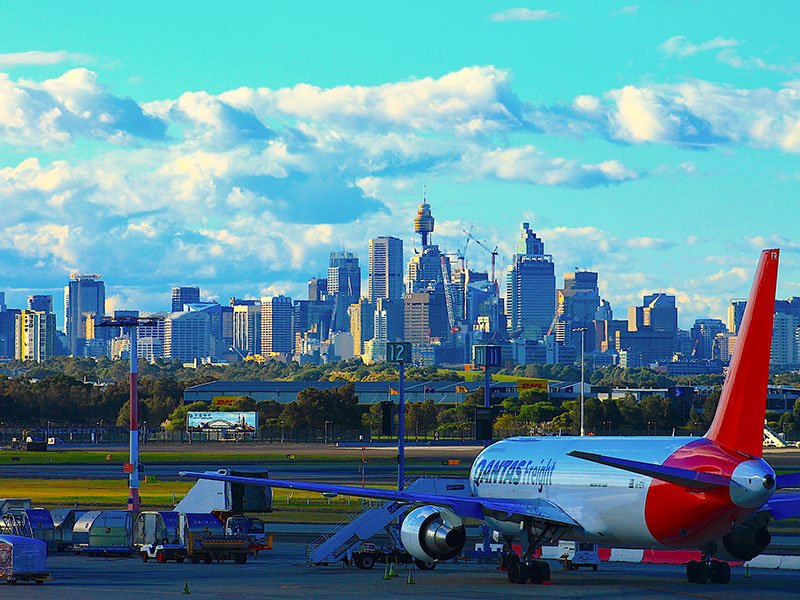The popular and long-running Export Market Development Grant scheme is in crisis, with “disastrous” reforms quietly introduced two days before Christmas “blindsiding” local businesses and leading to the value of grants being cut by as much as 80 per cent, according to expert advisors.
On 23 December last year, a press release from Trade Minister Dan Tehan heralded $80 million in new funding and unprecedented demand for the popular scheme, which provides reimbursements of up to 50 per cent for eligible export promotion expenses.
The statement from Mr Tehan did not mention that the average size of grants to be given to Australian businesses looking to increase exports would be dramatically reduced, with some businesses that had applied for $150,000 to receive as little as $35,000.

This is due to changes to the Export Market Development Grant (EMDG) scheme which came into effect this financial year, transforming it into a more traditional entitlement-based grants program, with funding paid beforehand rather than at the end of the financial year.
The changes also scrapped the requirement that a company be “export ready”, significantly increasing the number of businesses that are eligible for the grants.
The government allocated a fixed $157 million per year to the scheme, and this has to be spread across all eligible companies which apply for AMDG grant, as the scheme is not competitive.
According to Mr Tehan, Austrade received more than 5300 applications for the EMDG program, the highest number ever. Of these, more than 2600 were first time applicants, and nearly half of those were applying for the maximum amount of funding on offer.
“Demand for EMDG has been particularly strong this year, with the reform EMDG program making it easier for businesses to apply,” Mr Tehan said late last year.
With significantly more companies accessing the scheme, the size of the grants reduced substantially for all companies.
This is the result of the government’s “poorly structured” legislative changes to the scheme, Access EMDG partner and Export Consultants Association national chair Rod Campbell said.
“I honestly don’t believe the scheme will last in its current form. I can see it all crumbling into tinders,” Mr Campbell told InnovationAus.
“A reasonable number of clients now say it’s a waste of time. I expect there’s going to be a drop off in the number of people who actually claim it, and there’ll be a major reduction in the amount people actually spend.”
Under the reformed scheme, grants will be on offer across three tiers. Tier 1 is for companies already exporting, tier 2 for companies with an existing presence in a market or looking to enter a new one, and tier 3 for exporters looking to continue expanding into a new market.
When the reforms were implemented, the government listed the expected value of grants across the three tiers. But an update from Austrade just before Christmas last year revealed that the size of these grants for 2022 would be drastically lower than the government had indicated earlier.
Despite saying that $40,000 per year would be available for tier 1 applications, the estimated maximum grant for this is now down to $15,000.
For tier 2, the government said that $80,000 would be on offer, but this has been slashed to an estimated $23,000, nearly a quarter of what was pledged.
The third and most significant tier was originally meant to be offering $150,000 per year. Under new government predictions, only $35,000 will be on offer, a fifth of what companies believed would be available when they applied for the scheme.
These changes “blindsided” companies which had made significant plans for the larger grant sizes, Grant Help director Lachlan Catanese said.
“Austrade has spent the last year encouraging small and medium businesses to expand into new markets. Many that have positioned their businesses to do this were relying on funding through the EMDG and are now having to abandon their business plan,” Mr Catanese said.
“The Minister For Trade cannot expect exporters to survive with such weak support from the government.”
The issue stems from the scrapping of the Export Performance Test in late 2020, which means a far wider swathe of companies are able to access the grants, some with little ability to export, Mr Catanese said.
“By waiving the test, exporters who provide meaningful contributions to the Australian economy have seen their funding reduced in favour of those who have little to no exporting experience or prospects,” he said.
Mr Campbell agreed, saying the test acted as the “safety valve” for the scheme.
“It’s the redeeming feature, and the reason that year upon year when it’s reviewed it’s not seen as an economic risk. Under the new scheme it’s gone,” he said.
“Where have [the new applicants] been for the last three, four or five years? Who are they? How big are these businesses and will they ever perform? Under the rules they have an equal right to be at the table taking their wedge of the funds that somebody who has been exporting successfully and generating millions in income.”
The cuts to the grants have meant that a number of Australian businesses are now scrapping plans to expand overseas, and some are even shedding staff, Mr Catanese said.
“Because of these cuts, many of the businesses I work with are taking a backseat in their expansion and even reducing their staff. Without proper government support for exporters, the Australian economy will struggle to recover,” he said.
Do you know more? Contact James Riley via Email.


I have claimed this in a previous company and provided back to the Government coffers millions in export earnings and taxes. We would have struggled in the early days with out it.